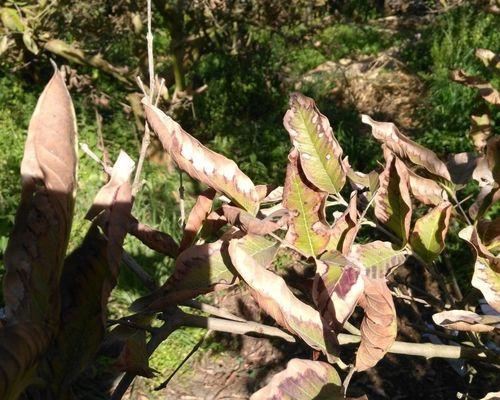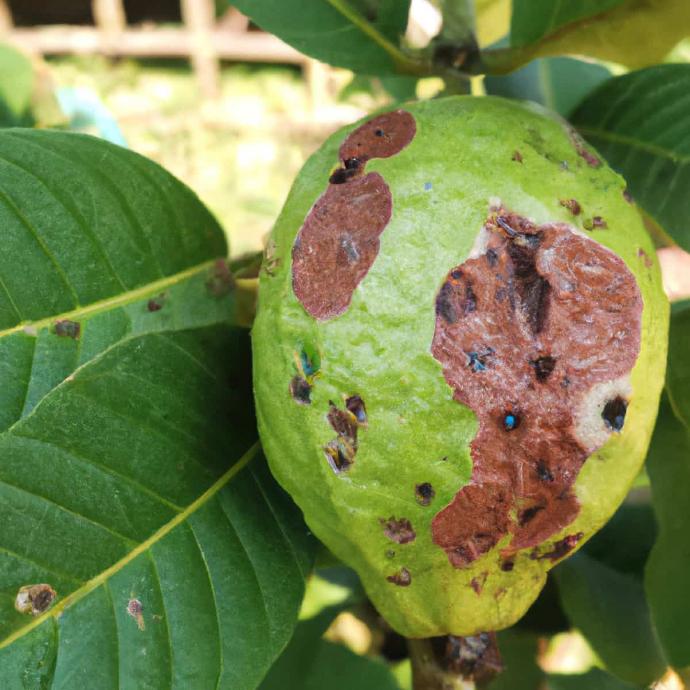Safeda guava Plant
Safeda Guava, also known as Psidium guajava 'Safeda,' is an outdoor fruiting tree. Plant in well-draining soil with full sun exposure. Water consistently, and fertilize during the growing season. Pruning can be done to shape the tree and remove dead or crowded branches.
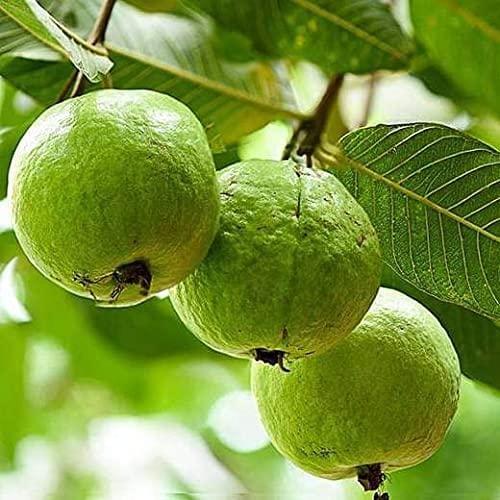
Habit
Tree
Height
3-8 m
Growth
Fast
Soil
Well Drained, loamy
Shade
Full Sun to partial shade
Moisture
Moist
Edible
Yes
Medicinal
Yes
Origin
Tropical America
Climatic Condition
Tropical, Subtropical
Temperature (°)
15-35°C
Humidity (%)
50-80%
Potting media
Field soil
Fertilizers
Organic, NPK-rich
Watering
Regular
Plant Weight
200-500 g
Flowering Time
Year-round
Soil Ph level
5.5 - 7.5
Water Ph level
5.5 - 7.5
Soil EC
1-2 dS/m
Yield Per Plant
50-80 kg/tree
NPK ratio
10:10:10
life Span
20-40 years
Health Benefits
Rich in Vitamin C, boosts immunity
Suggested Grow Media or Potting Mix ?
50% loam, 25% compost, 25% sand
Suggested Fertigation/Fertilizers
Fertilize every 6 weeks with a balanced fertilizer.
Common Diseases and Remedies
Guava wilt , Fruit canker .
appearance of yellow colouration with slight curling of the leaves of the terminal branches, Brown or rust coloured, unbroken, circular, necrotic areas appears on fruits.
Prune infected branches and remove fallen fruit, Developing canker-resistant varieties.
Soil drenching with brasicol and spraying of Bavistin (0.1%) around the roots and leaves at an interval of 15 days, Bordeaux mixture or copper oxychloride
HEALTH BENEFITS
1. High in vitamin C, fiber, and antioxidants.
2. Helps with digestion, boosts immunity.
3. Supports heart health.
What Is An Safeda Guava Plant?
Common name: Safeda Guava, Allahabad Safeda. Botanical name: Psidium guajava. Growth characteristics: Safeda guava is an excellent tropical and subtropical guava variety known for its high yield. It grows in different soil types and is cultivated in India.

What Are The Different Types Of Safeda Guava Plants?
1. L-49 (Lucknow-49)
Productive, yellow-green, milky sweet flesh, rough surface. The shell is very thick, The pulp of contains a small number of seeds, which are very soft inside. Performance is maintained due to the low number of seeds is medium and very popular in Maharashtra and Andhra Pradesh. Also suitable for table use The yield of is approximately 25 tons/hectare.
2. Allahabad Safeda
This is the most famous clothing store of Uttar Pradesh. Average tree height (5.8-6.5m), has strong branches and thick leaves. Fruit center (180 g), round ,good, few seeds. The flesh of the fruit is white and keeps well.
3. Banarasi
The tree height varies between 4.0 and 5.5 m, its crown is wide, it has round, light yellow fruits.It is grown mostly for food.
4. Chittidar
Chittidar is similar to Safeda except that it has pinhead-sized red dots on its surface.
5. Harijha:
The height of this variety is about 3.5 to 4.5 m with small branches. The fruit is round, yellow-green and sweet.
6.Red Meat:
Tree height 3-5m
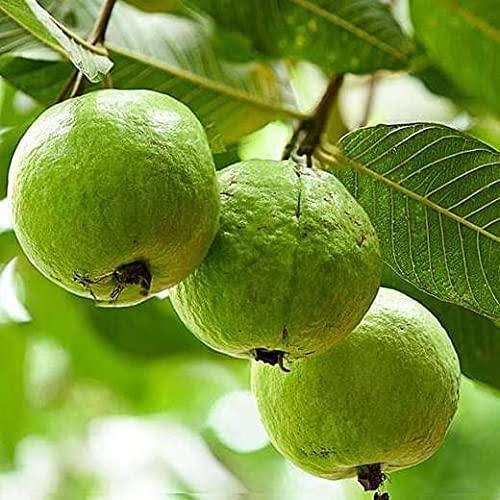
1. Location
Guava is a fruit that grows in many tropical and subtropical regions. Common guava, Psidium guajava (lemon guava, apple guava), is a small tree from the family Myrtaceae (Myrtaceae) native to Mexico, Central America, the Caribbean and northern South America.
2. Sun light
Generally speaking, guava trees need to be planted in full sun to see growth and fruiting. Choose a location in your landscape away from other trees, buildings and power lines. Remember that guava trees can grow up to 20 feet tall if not pruned to control their size.
3. Soil
Allahabad Safeda Guava can adapt to many soil types but is best suited to deep, well-drained, slightly acidic sandy loam soils. Allahabad safe guava trees need a lot of organic matter. Allahabad safe guava tree should be fertilized with manure and compost once a month.
4. Hydration
Guava is mostly grown under rainfed condition. During winter season, irrigation is provided at an interval of 20-25 days and in the summer months it is provided at an interval of 10-15 days by the ring method. Drip irrigation has proved to be very beneficial for guava.
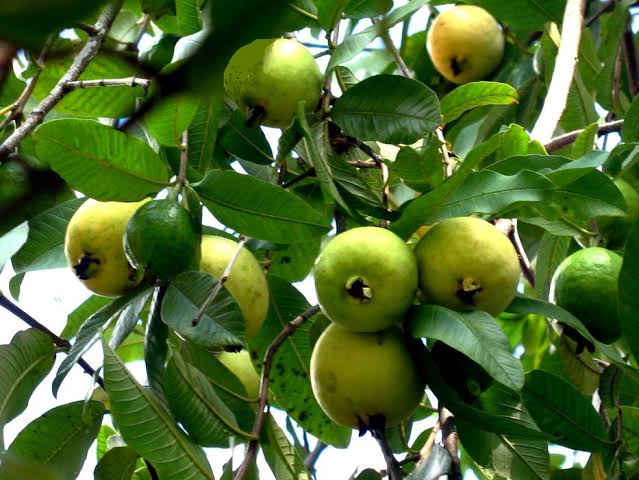
5. Nourishment
Safeda guava plant, also known as white guava (Psidium guajava), requires special nutrients to support the health and growth of the fruit. The main nutrients you need to grow Safeda guava plants are:
1. *Nitrogen (N):* Nitrogen is important to promote plant growth and leaf growth in guava plants. This is especially important in the early stages of growth and when the plant is actively producing new leaves and shoots. Use nitrogen-rich fertilizers or organic amendments such as compost or aged manure to provide needed nitrogen.
2. *Phosphorus (P):* Phosphorus is important for root growth, flowering and fruit formation of the guava tree. It helps promote a healthy root system, producing fruit and growth. Mix a phosphorus-rich fertilizer or bone meal into the soil before planting or a side fertilizer during the growing season.
3. *Potassium (K):* Potassium plays an important role in the overall plant health, fruit quality and disease resistance of your guava plant. It helps control water absorption, improves fruit flavor and color, and improves the plant's ability to withstand environmental stress. Apply potassium-rich fertilizer or potassium sulfate to the soil to provide adequate potassium.
4. *Calcium (Ca):* Calcium is important in preventing diseases such as fruit rot and head burn in guava plants. It helps maintain cell wall integrity and increases the firmness and shelf life of the fruit. Add calcium-rich amendments such as gypsum or lime to the soil to ensure adequate calcium levels.
5. *Magnesium (Mg):* Magnesium is required for chlorophyll synthesis and photosynthesis in guava plants. It helps maintain healthy leaf color and overall plant vitality. Apply magnesium-rich fertilizer or Epsom salt (magnesium sulfate) as needed to correct magnesium deficiency in the soil.
6. *Micronutrients:* Guava plants also need various micronutrients such as iron, manganese, zinc and boron for proper growth, flowering and fruiting. Soil testing can help identify micronutrient deficiencies, and foliar sprays or soil amendments can be used to correct deficiencies.
6. Issues
Like other plants, Safeda guava plants can face many problems that can affect their health and growth. Some problems that occur in Safeda guava plants are:
1. *Pest infestation:* Guava plants are plagued by pests such as aphids, scale insects, mealybugs and fruit flies. These pests feed on leaves, stems or fruit, causing damage and reducing the vigor of the plant. Regular inspection and timely treatment with insecticides or horticultural oils can help control pests.
2. * Diseases:* Guava plants may be susceptible to fungal diseases such as anthracnose, powdery mildew and root rot, especially in damp or inadequate ventilation conditions. Good sanitation, good ventilation and fungicides can help prevent fungal diseases.
3. *Nutritional Deficiencies:* Lack of nitrogen, phosphorus, potassium or micronutrients can cause growth arrest, yellowing of leaves or stunted fruit development in the Safeda guava plant. Soil testing and fertilization treatments can help correct nutrient deficiencies and promote healthy growth.
4. Mulching: Improve water quality to ensure that the soil is evenly distributed but not waterlogged. Mulching can help retain soil moisture and maintain soil temperature.
5. *Environmental stress:* Guava plants can be stressed by heat, frost, wind or drought, which can affect their growth and fruit production. Provide protection against harsh environments such as frost in cold weather or storms in stormy areas.
6. *Pruning Problems:* Improper pruning or excessive pruning can weaken Safeda guava plants, making them susceptible to diseases and pests. Follow up with pruning to remove dead or diseased branches and encourage air circulation in the trees.
7. *Fruits:* Excessive fruit formation may occur due to lack of pollination, nutrient deficiency, water stress or environmental factors. Proper irrigation, fertilization and pesticides help reduce fruit loss and increase fruit yield.
7. What are the benefits of Safeda Guava plant
Health benefits
Control of blood sugar.
It is rich in vitamin C.
Antioxidant properties.
Protects eyes from age-related macular degeneration.

FAQs About Growing Safeda Guava?
1. What are the characteristics of Allahabad Safeda guava?
The fruit of Allahabad Safeda Guava has a thin, white skin and white flesh and has a pleasant sweet taste. Check blood sugar. Contains vitamin C. It has antioxidant properties.
2. Which Guava plant is the best?
Allahabad Safeda Guava plant is the most famous and popular among all guava varieties. Suitable for dining room and kitchen. These trees grow tall and have an upright growth pattern.
3. Can guava ripen on trees?
Guavas can be ripened by keeping them in paper bags at room temperature for a few days. Ethylene gas produced by guava helps speed up ripening.
4. Why does guava turn pink?
It is added to pink guava which contains organic pigments called carotenoids, which give carrots and tomatoes their distinctive red color. The concentration of carotenoids varies by species, and the color of guava also varies from light to dark red.
5. In which month will Guava be available?
One or another region of the country collects guavas throughout the year (except May and June). However, in northern India, monsoon harvest is done in August, winter crops are harvested in November-December, and spring crops are harvested in March-April.
